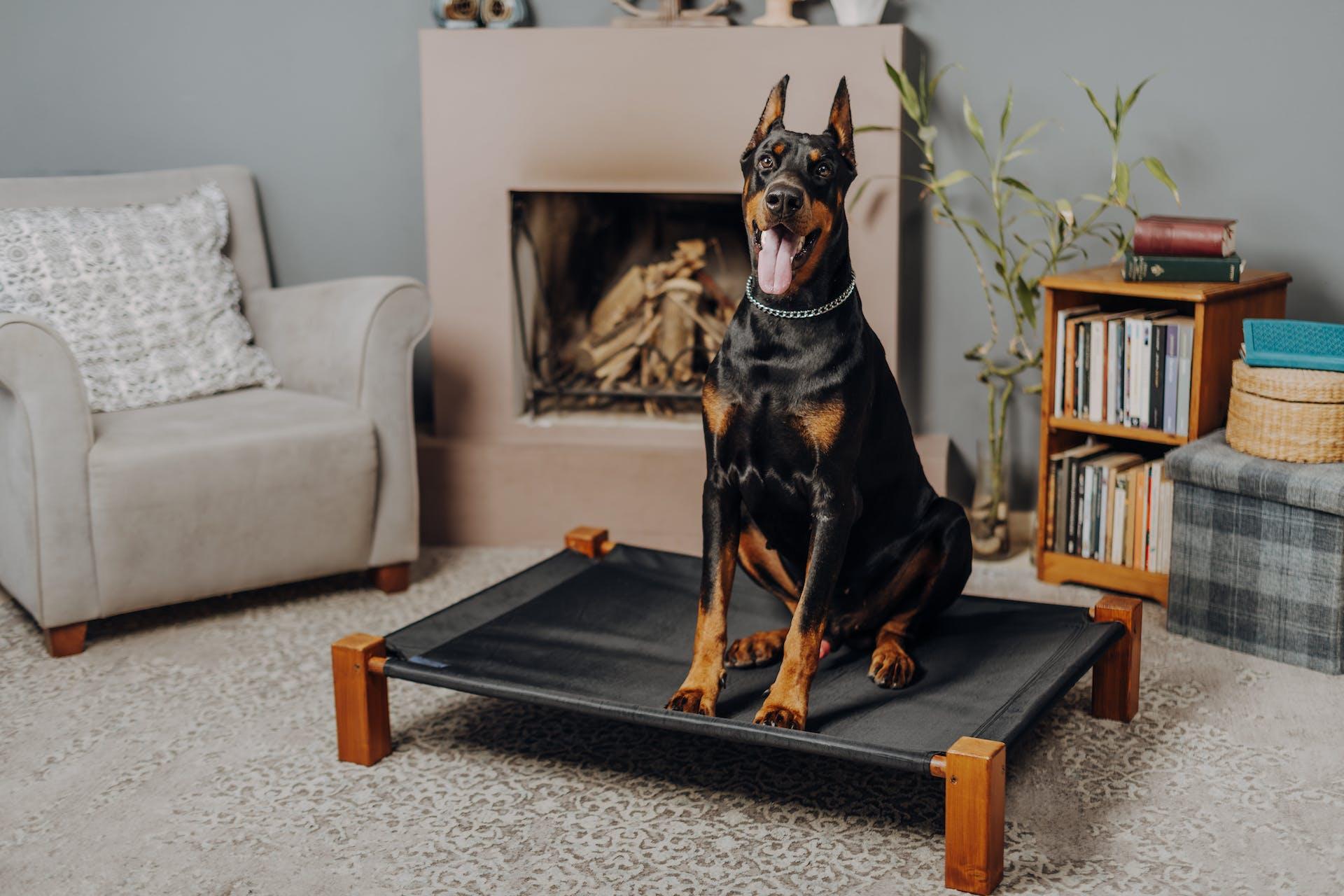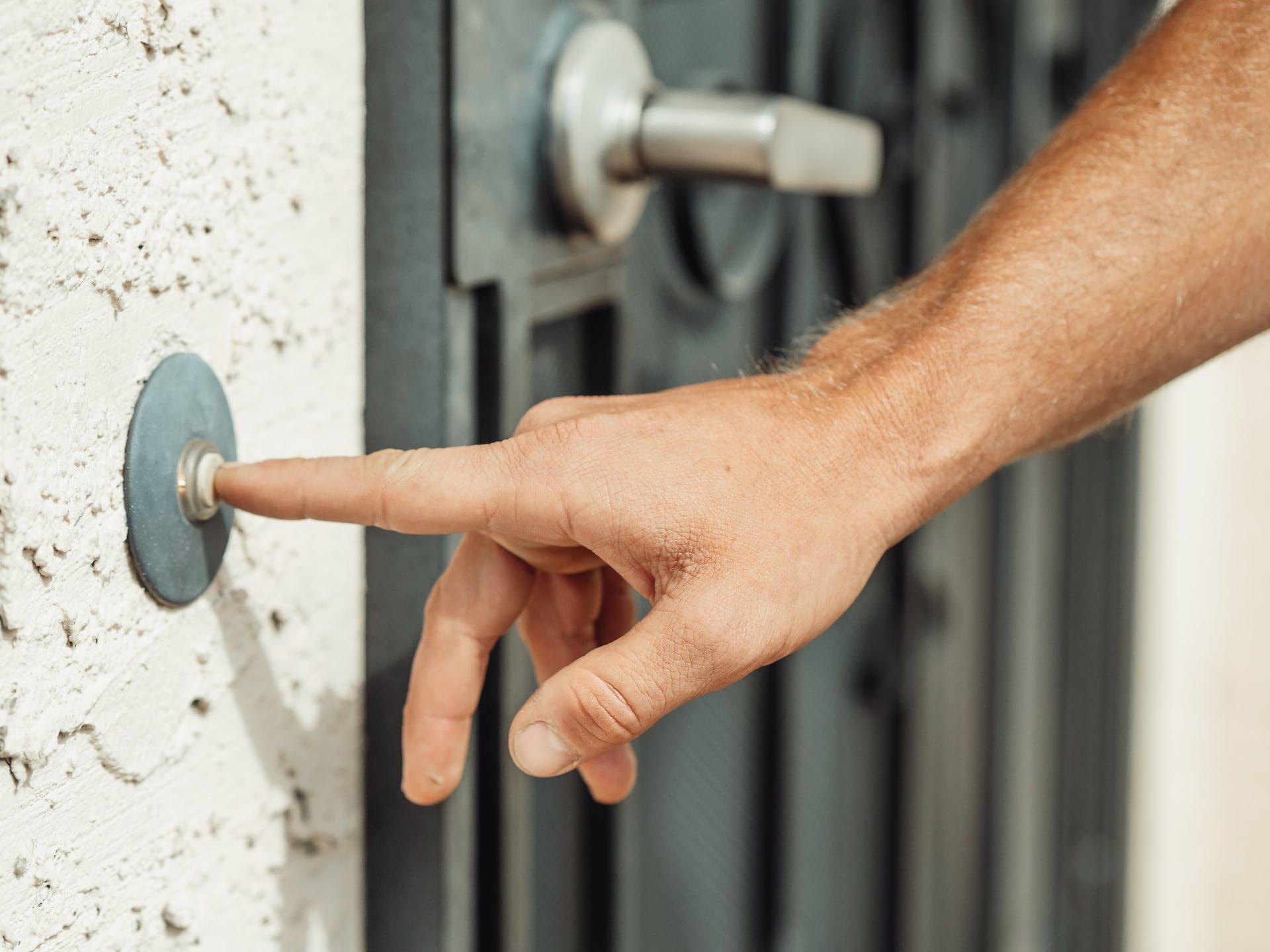Do you dread the moment your doorbell rings? Do you try and ask people to not use your doorbell? Then you're not alone. This is an issue that many dog owners face. Dogs bark for many reasons but the two most common reasons for barking at doorbells stems from fear or excitement. Understanding the motivation behind why your dog displays this behaviour will help determine the training plan going ahead.

Desensitise the noise of the bell
The easiest method to stop your dog from barking when the bell rings is to desensitise the noise of the doorbell. This can be done by either pressing the doorbell yourself or recording the noise of the bell and playing it on a Bluetooth speaker.
1. Find a treat that your dog finds extremely tasty as a high value reward such as dog friendly peanut butter or small pieces of meat. This can also be done using a lick mat or Kong.
2. Offer a treat to your dog and ring the bell at the same time your dog is consuming their treat. Do not ring the bell when not eating.
3. Every time your dog goes to either eat the treat or lick their toy ring the bell again.
4. The step above will have to be repeated often in order to develop a conditioned response to the doorbell meaning something good is coming vs there is a person at the door.

Teach an alternate behaviour
Teaching your dog an incompatible behaviour such as going to their bed or a place command will set your dog up to succeed when someone enters the house, instead of them greeting guests with all four excitable paws. Don't worry this won't make your dog suddenly dislike visitors, it just changes their response to their arrival.
1. Teach a place cue. Using high value rewards lure your dog with a treat to their bed, once on the bed give them a treat and offer praise.
2. Repeat the above and start adding a word command such as 'bed' or 'place'.
3. Increase the criteria and difficulty. Start adding distance to this command. Start with a few steps away from the bed then go back and reward each time. Then see if you can ask the dog from different areas of the room. Remembering to always praise your dog every time they do well and give them a tasty treat.
4. Add duration. Start waiting a little longer whilst your dog is in the place command before going over to reward. Start off by waiting a few seconds then slowly increase this duration from seconds to minutes.

Teach the bell to become the cue for the dog to go to their bed
By this point your dog should already associate the doorbell to mean something good is coming. If your dog is still reacting to the bell then they aren't ready for this step yet.
Once your dog fully understands the place command and that the bell means something rewarding then you can pair these two things together, developing the doorbell to become the cue for the dog to go to their bed.
1. Ring the bell and give your dog the command to go to their bed. Then reward.
2. Repeat this step often until you start ringing the bell and the dog automatically takes themselves to their bed. Remembering for every repetition to highly reward your dog each time.
3. Start adding visitors to your training. If your dog steps up to go forward to greet your guest then ask the guest to leave the room and ask your dog to go back to their bed, reward and try again. Continue repeating this until your dog remains in their bed. Do not punish your dog for getting up as they are still learning the expectations. The person leaving the room is punishment enough as that is what your dog wants.
The most important factor in any training is setting up scenarios for your dog to succeed, which may mean tweaking a few of these steps in order to make it easier for your dog such as using the leash when you start adding visitors. Remember your dog isn't a mind reader so you have to show them what behaviour you expect them to do. Learning doesn't occur overnight this will take time, practice and repetition in order to succeed.

